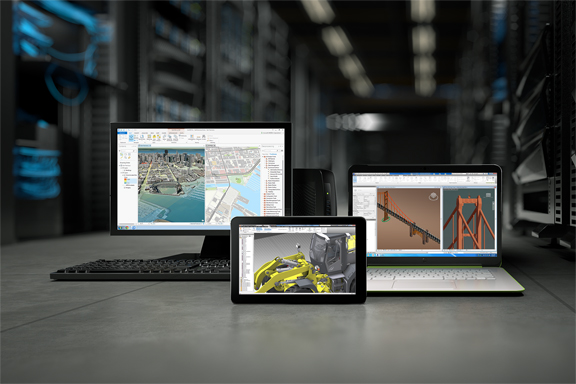
GPU maker NVIDIA launches a new release of NVIDIA GRID virtualization solution (image courtesy of NVIDIA).
Latest News
August 24, 2016
 GPU maker NVIDIA launches a new release of NVIDIA GRID virtualization solution (image courtesy of NVIDIA).
GPU maker NVIDIA launches a new release of NVIDIA GRID virtualization solution (image courtesy of NVIDIA). The new release offers a rich set of tools for monitoring virtual GPUs (image courtesy of NVIDIA).
The new release offers a rich set of tools for monitoring virtual GPUs (image courtesy of NVIDIA).GPU maker NVIDIA is releasing a new version of its virtualization product NVIDIA GRID this week. The centerpiece of this release is an upgraded enterprise-grade resource monitoring software, also called NVIDIA GRID.
Virtualization—the use of server-class hardware to host and deploy virtual machines (VMs)—is driven by the desire to cut cost. Whereas physical workstations come with fixed, finite computing capacity, VMs are configurable and expandable based on the users’ evolving needs. But the key to this strategy is robust tools for IT managers to monitor VM performance levels, peak demands, and under-utilized resources. Without such tools, managers have no way to shift and allocate the computing resources to match the projects’ ebbs and flows.
NVIDIA GRID is a GPU-driven virtualization solution, which promises better performance with 3D modeling, simulation, and rendering programs that rely heavily on the GPU. The solution involves GPU-powered hardware for hosting VMs and a software component for resource allocation.
The latest generation GRID systems support NVIDIA Tesla M10 GPUs, successors to the currently supported Tesla M6 and M60 GPUs. Tesla M10 can support up to 64 concurrent users per board; therefore, systems with Tesla M10 can deliver the “lowest cost per GPU-accelerated desktop,” NVIDIA said in its press briefing with DE. Certified Tesla M10-equipped systems will be offered by NVIDIA’s partners, including Dell, Supermicro, ASUS, and Nutanix.
The updated monitoring tools in the new NVIDIA GRID offer insights into the hosting hardware as well as the VMs. The software currently lets you monitor the host hardware’s power consumption, clock speeds, temperature, and usage of the physical GPUs. NVIDIA has added a list of new functions for system managers to monitor usages of the virtual GPUs, 3D engine, decoding engine, frame buffer, and other resources. VM users will also gain insights into their own GPU, frame buffer, encoder, and decoder usages.
John Fanelli, NVIDIA’s VP of GRID Products, explained, “Let’s say you have two Tesla M10 boards in the server. At the host-level, you can use the monitoring software to see how the physical GPUs are doing. But you can also look at the 128 users (one Tesla M10 can support up to 64 concurrent users) individually. If you notice that one user’s VM is having problems, you can troubleshoot that specific VM. You don’t need to look at it as a unit in the entire setup.”
GPU-acceleration was once confined to the graphics-intensive game development, digital content creation, and animation markets; however, it has lately become a feature of mainstream computing tasks, such as running Windows OS and Microsoft Excel.
Subscribe to our FREE magazine, FREE email newsletters or both!
Latest News
About the Author
Kenneth Wong is Digital Engineering’s resident blogger and senior editor. Email him at [email protected] or share your thoughts on this article at digitaleng.news/facebook.
Follow DE





